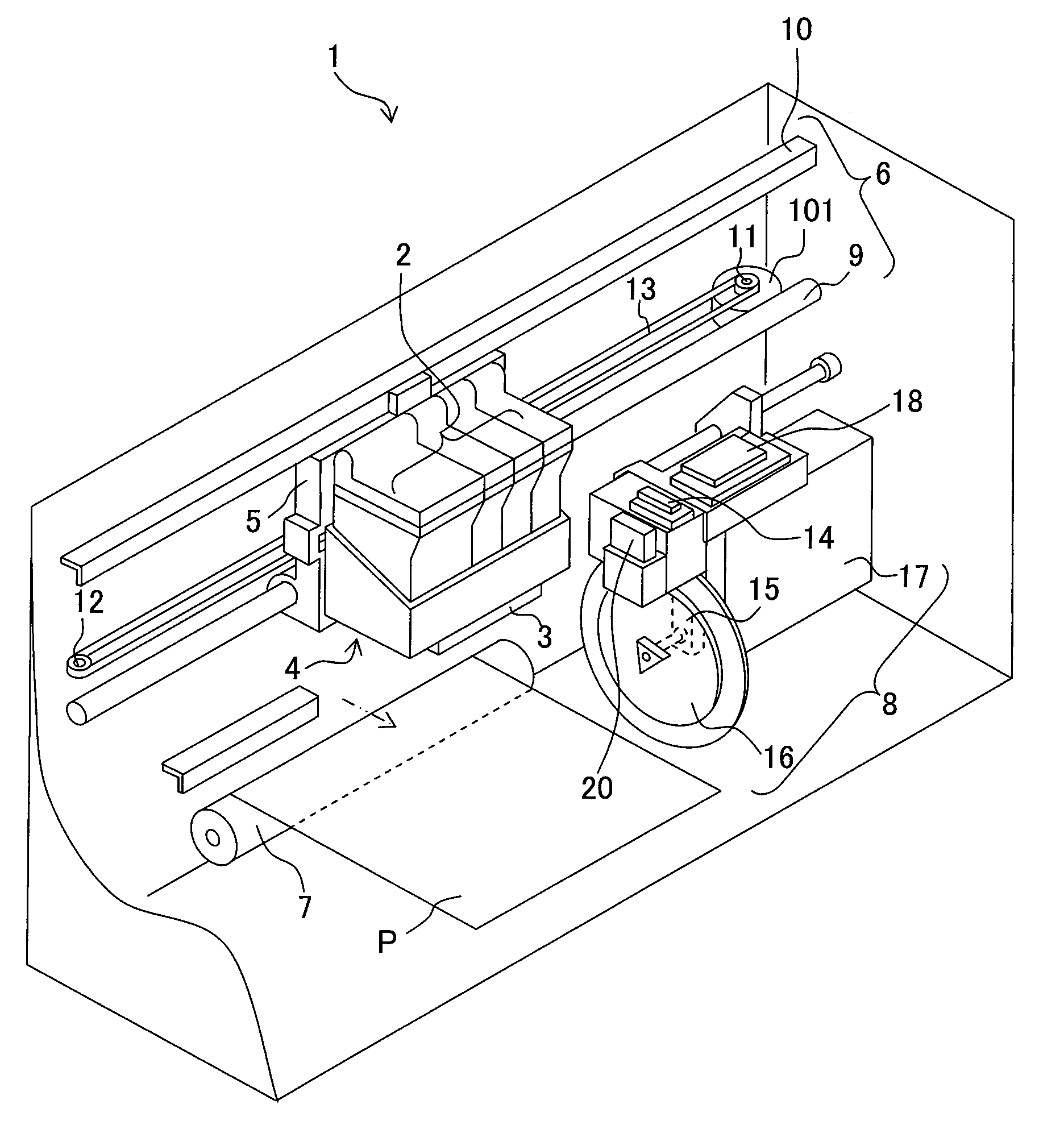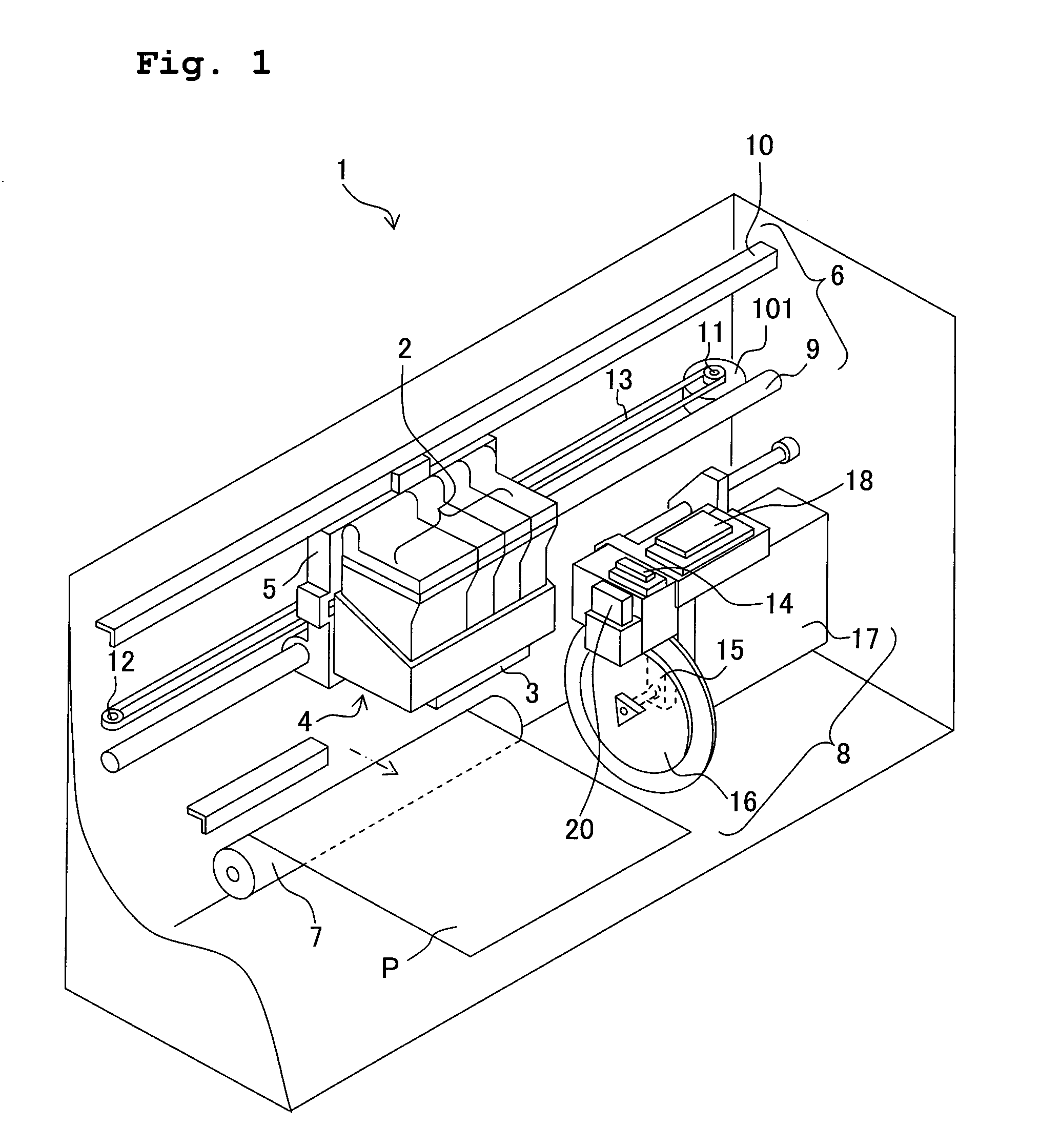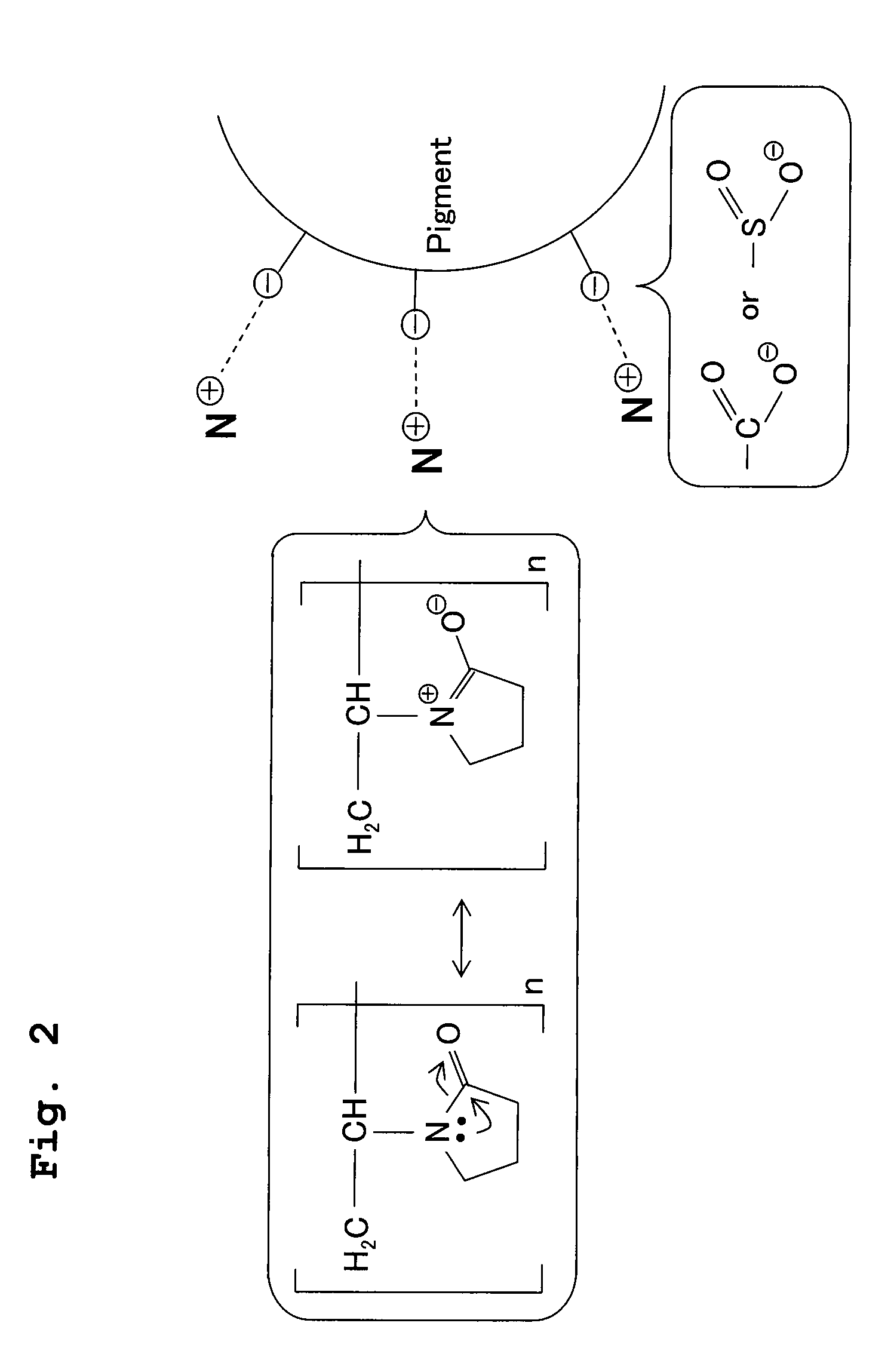[0009]In view of the above, an object of the present invention is to provide an ink set for ink-jet recording wherein the permeability and the
optical density of a pigment ink are high, the
discharge failure or the undischarge, which would be otherwise caused by the clog-up of the nozzle, is not caused even when the pigment ink and a dye ink are brought in contact with each other in the vicinity of the nozzle of the ink-jet head, and the migration of the dye ink is satisfactory.
[0012]As described above, it is known that polymer is added to a pigment ink for the purpose of improving the dispersion stability of the pigment in the pigment ink. However, in the present invention, the polymer having the
lactam structure is blended in the dye ink included in the ink set for ink-jet recording. The following merits can be obtained when the dye ink contains the polymer having the
lactam structure. (i) Even when the pigment ink and the dye ink are brought in contact in the vicinity of the nozzle in the ink-jet head, the polymer having the lactam structure, which is contained in the dye ink, acts on the pigment of the pigment ink so as to prevent the solidification of the inks, thereby preventing unsatisfactory jetting or jetting failure which would be otherwise caused by the clog-up of the nozzle. As a result, there is less necessity to add a polymer to the pigment ink for the purpose of improving the dispersion stability of the pigment. Further, (ii) since any polymer is not added to the pigment ink or a very small amount of the polymer is enough even if the polymer is to be added to the pigment ink, it is possible to maintain the OD value of the pigment ink to be high. In particular, when the polymer having the lactam structure is blended in only the dye ink in the ink set of the present invention as in embodiment which will be described later on, it is possible to further increase the
optical density of the pigment ink. Furthermore, (iii) Even though the substance having the surface active ability such as the surfactant is added to the pigment ink in a relatively large amount, the problem of the solidification due to the contact of the dye and pigment inks, which is associated with the
conventional technique, does not occur owing to the effects described in the above item (i). Therefore, it is possible to remove the limitation in the amount of the substance having the surface active ability to be added to the pigment ink. Therefore, in the ink set of the present invention, the substance having the surface active ability can be blended in an amount sufficient to fulfill the condition of the
line width as described above, and it is possible to enhance the permeability of the pigment ink. Further, in the ink set of the present invention, the polymer having the lactam structure is especially selected and blended as the polymer to suppress the aggregation or coagulation of the self-dispersible pigment. By doing so, even when the pigment ink and the dye ink are brought in contact with each other in the vicinity of the nozzle of the ink-jet head, the discharge failure, which would be otherwise caused by the clog-up of the nozzle, is not caused. In the following, this effect is briefly explained with reference to FIG. 2.
[0013]For example, as shown in FIG. 2, the polymer having the lactam structure can be expressed by a
resonance structural formula in which the
electron is moved between
nitrogen in the lactam and the
carbonyl group to which the
nitrogen is bonded. When the polymer having such a γ-lactam structure is added to the pigment ink containing the self-dispersible pigment, the positively-charged (+)
nitrogen in the lactam is attracted by negatively-charged (−)
oxygen in the
carbonyl group or sulfon group existing on the surface of the self-dispersible pigment, and the polymer having the γ-lactam structure wholly covers around the
pigment particle. Here, although the self-dispersible pigment has, as the counter
ion, a cation such as
sodium ion, the nitrogen of the lactam has lower
ionization tendency than the cation; and thus it is considered that the nitrogen of lactam is more easily bonded with the
oxygen of the
carbonyl group or sulfon group existing on the surface of the self-dispersible pigment, than the cation of the self-dispersible pigment. With this, it is considered that the coagulation or aggregation of the
pigment particle is prevented. Note that when the molecular weight of the polymer is grater, one polymer can consequently surround a several pieces of the
pigment particle. With this, it is considered that the aggregation is easily occurred in such a situation. Therefore, in the present invention, it is preferable that the molecular weight of the polymer having the lactam structure is small.
[0014]The inventors also found out, in addition to the above effects or merits, that it is possible to suppress the migration of the dye ink by adding the polymer having the lactam structure to the dye ink for ink-jet recording. The reason for this can be explained, based on the
structural formula of the polymer having the lactam structure as shown in FIG. 2, as follows. The migration, in which a part or parts of a dye ink or dye inks is / are blurred to the circumferential edge of a printed portion of the tri-color black, is considered to be caused due to the movement of dye in, for example, a receiving layer of a glossy paper. In the dye ink of the present invention, the negatively-charged (−)
oxygen in the group such as calboxyl group in the dye is electrically attracted by the positively-charged (+) nitrogen in the lactam; the polymer covers around the dye; and the
apparent size of the dye becomes larger (molecular weight becomes larger). As a result, it is considered that such a large dye is suppressed from moving in the receiving layer of the glossy paper. In this case also, since the nitrogen of the lactam has lower
ionization tendency than the cation as the counter
ion of the dye, it is considered that the nitrogen of lactam is more easily and preferentially bonded with the oxygen of the carbonyl group or sulfon group existing on the surface of the dye.
[0015]Accordingly, in the ink set of the present invention, by blending the polymer having the lactam structure to the dye ink, there is obtained the
synergy for realizing the following four effects at the same time, namely: (i) the ink solidification, which would be otherwise caused by the contact of the dye and pigment inks, is suppressed to thereby prevent the clog-up of the nozzle; (ii) the optical density of the pigment ink is increased; (iii) the permeability of the pigment ink is improved; and (iv) the migration of the dye ink is suppressed.
 Login to View More
Login to View More 


